Text and Photos by Henrylito D. Tacio
The Philippines is considered the “pearl of the Orient seas.” In fact, the largest pearl ever known to man came from this country. The gemstone, which weighs 14 pounds (6.4 kilograms), was discovered by a Filipino Muslim diver off the island of Palawan in 1934.
Exquisite pearls have been harvested and cultivated primarily for use in jewelry, but in the past, they were also stitched onto lavish clothing. The calcium carbonates in minute crystalline form have also been crushed and used in cosmetics, medicines, or paint formulations.
As entrancing pearls were most-sought-after by the rich and famous, many prominent Filipinos living near the seas cultured pearl oysters. One of them was Daniel Aguinaldo, a wealthy businessman, ecologist, and relative of the late Emilio Aguinaldo.
In 1958, while visiting the palm-fringed Samal Island in Davao del Norte, Aguinaldo, by chance, discovered a secluded cove with crystal-clear turquoise waters in Kaputian. It was in this idyllic place that he raised white-lipped oysters from the Sulu Sea from which mesmerizing pink, white and gold pearls were harvested.
Aguinaldo’s astounding work was carried on by the Floirendo family, who bought the tranquil area and used it for weekend recreational trips for family members and friends. As more friends were enticed by it, they decided to convert it into a resort. They named it Pearl Farm Beach Resort as a reminder of its former glory as a foster home for fastidious oysters whose survival depended upon an ultra-clean environment.
Although you will no longer find any cultured pearls, the 14-hectare five-star aquatic hideaway, which was opened to the public in 1982, is now “a paradise on earth,” to quote the words Joseph “Ace” Durano, former tourism secretary.
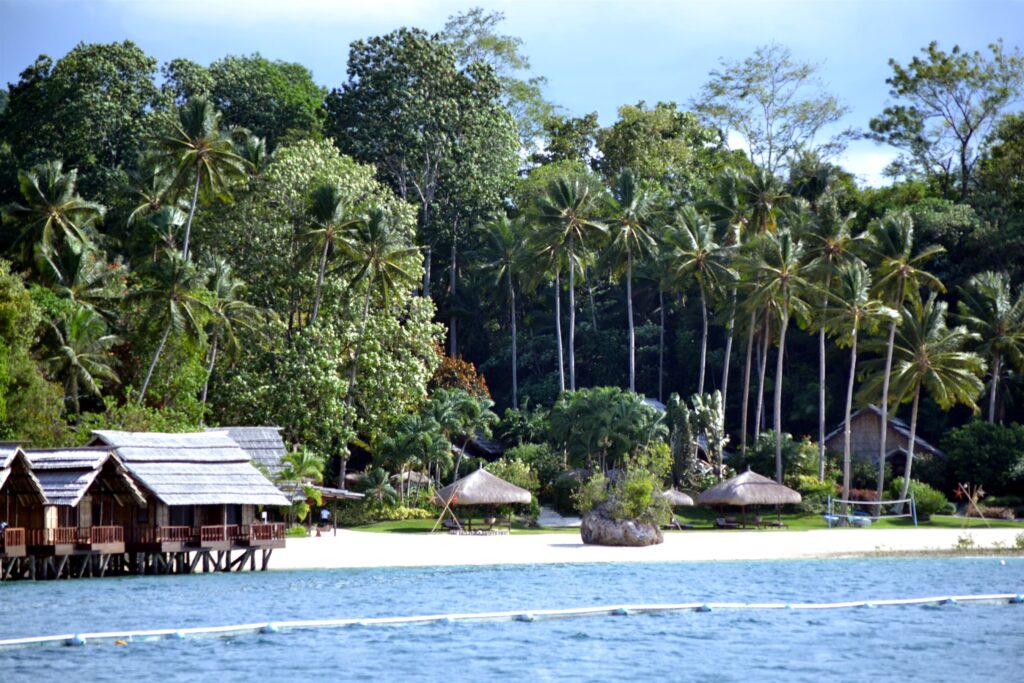
Mandaya beach 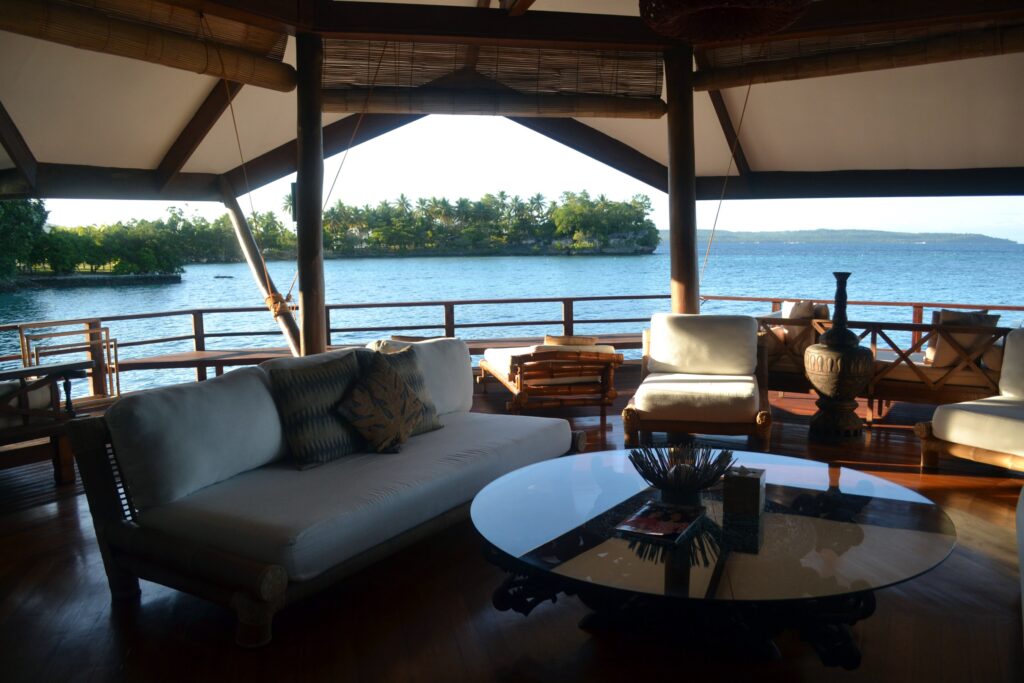
Villa veranda 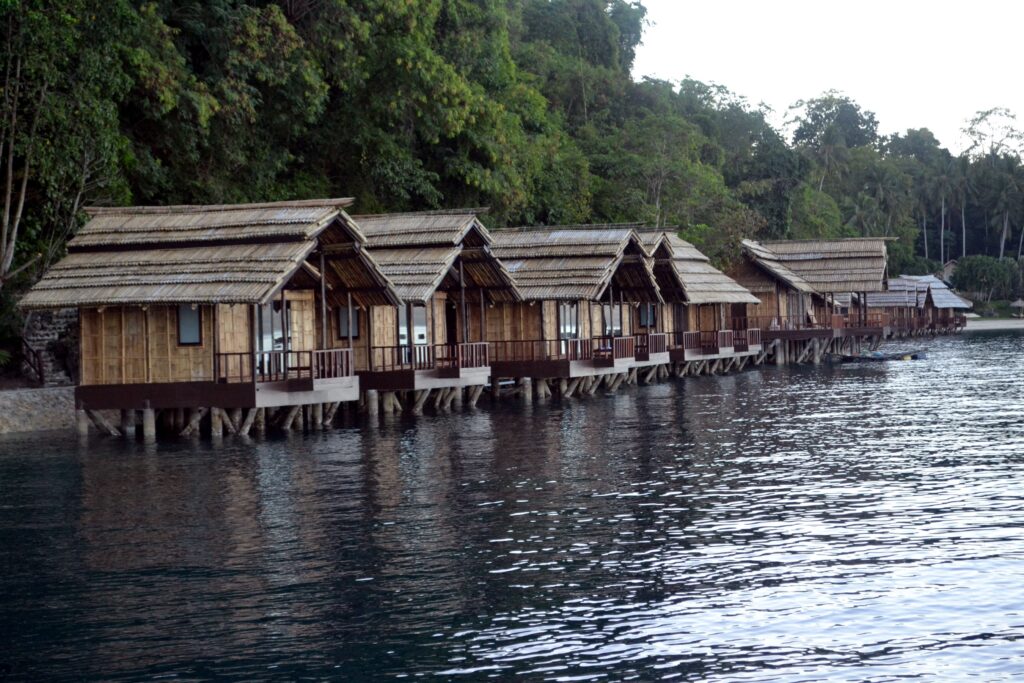
Samal Houses
The three-tiered Parola Wharf (named after the local term for lighthouse) was once a lookout post for strangers who were not welcome on the island, back in the days when it was still a pearl farm. Today, it is the resort’s famous landmark. Guests and visitors can go up the air-conditioned second floor and enjoy the night while drinking wine or beer and talking with friends or someone special.
“Nestled on the quiet west coast of Samal Island, it has a dominating view over the Gulf of Davao, neighboring Talikud and Malipano Islands and the majestic Mount Apo, the highest peak in the Philippines,” said its information briefer.
Environmentalists may find the place a haven of biological diversity as the resort is bordered on the east side by two hectares of gorgeous lush tropical forest with a remarkably wide variety of native greens, giant ferns, and flowers.
Even more enthralling is the fact that the magnificent blue waters around the resort have been declared by the Department of Environment and Natural Resources as a marine sanctuary, thus preserving the unique coral formations and fish life underwater.
For scuba divers, the resort is more than a paradise: excellent diving can be had right in front of the resort. This natural haven offers spectacular diving amongst the huge shoals of fish and the giant taklobo clams, without the need for tedious boat rides. Just 60 meters away from the resort are two sunken Japanese World War II ships that await discovery.
“If you ever get the chance to dive, do it here; you will see what the best of the Davao Gulf has to offer,” says Darrell Blatchley, an American who has been living in Davao City almost half of his life. “Fishing is strictly prohibited so the fish are plentiful and big. The fish are not afraid of you so they come in close as if they want to say hi!”
Among those that he saw while diving was the parrotfish, triggerfish, barracuda, and the poisonous but impressive lionfish.
But you don’t have to be a scuba diver to enjoy the underwater beholding sights either, as snorkel and fins are all you need in the shallows near the beach. In addition, the resort also offers a wide array of audacious water sports activities that include jet-skiing, water skiing, sea kayaking, and banana boat rides.
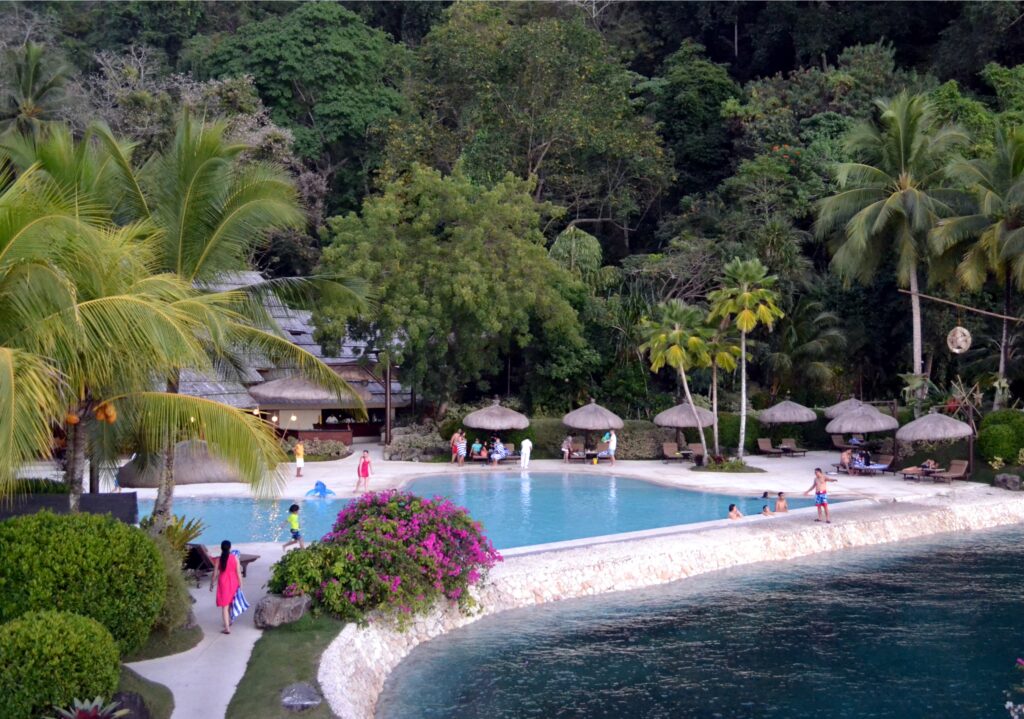
Maranao infinity pool 
Villa veranda 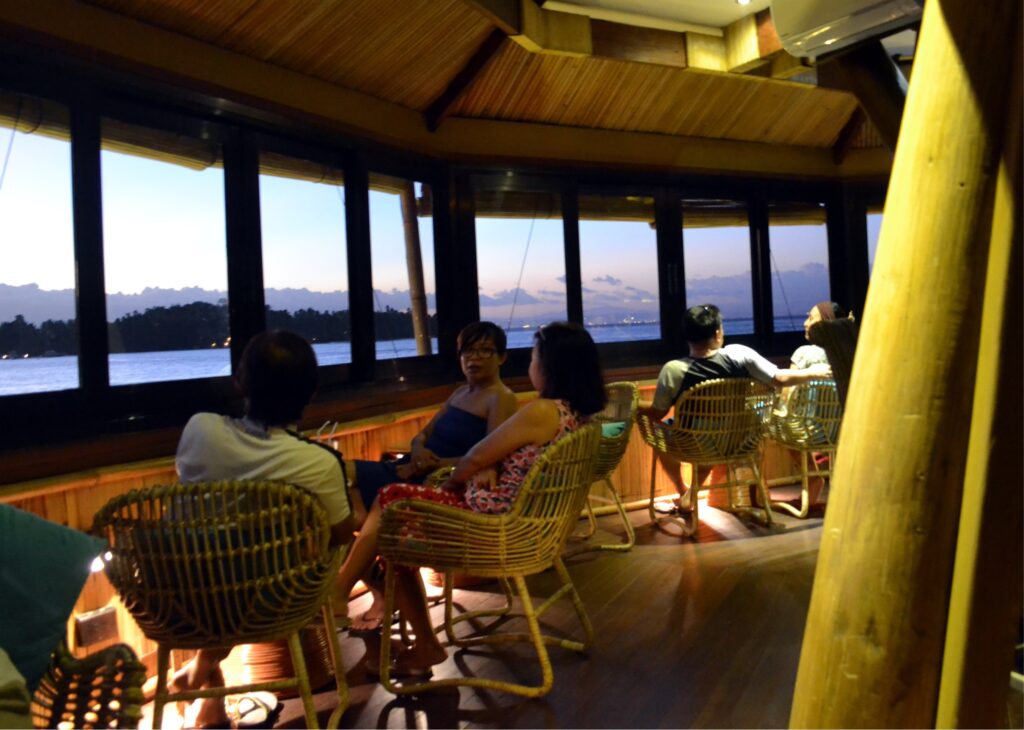
Parola bar
Alternatively, you can go swimming at the white-sand beaches of Maranao and Mandaya. There are also two outdoor swimming pools: the Maranao infinity pool and the Mandaya pool.
For drier pursuits, two tennis courts set amidst lush tropical foliage are available during the day and night. Tennis pro is available with prior arrangement. Or, you can play basketball with some of your friends.
There is an activity area located at the Mandaya area which offers indoor games such as billiards. On the second floor, body-conscious men and women can do their thing at the air-conditioned gym center. For children six years old and below, a kiddie corner with toys and electronic games is available for them.
Women can also pamper themselves at the Ylang-Ylang Spa, where body scrubs, hand and foot massage, and hair treatment, among others, can be requested. Only natural products are used in all spa services.
Pearl Farm is known for its attention-grabbing billeting houses, which are all newly-renovated. Take the case of the six luxurious two-story, Muslim-inspired Samal Suites. Each suite provides versatile family accommodation on two levels, a private beach and a veranda overlooking the sea and private stairs leading to the water.
On the upper portion of the Samal Suites are the Hilltop Rooms that open onto a veranda overlooking the Davao Gulf and lush forest. It is called balay, the local dialect for home.
Located on the center part of the resort are the Samal Houses, patterned after the stilt houses of seafaring Samal tribes of the Sulu Archipelago. Built on the water, each house offers westward views of the sea, sunset, Mount Apo, and surrounding islands that can very easily endure long daydreams.
Walking further from the Samal Houses are duplex-type bungalows called Mandaya Houses. Sit among the palm trees, and each has its own pocket garden and individual private balcony facing the beautifully kept white sand beach and the magnificent Southern Mindanao sunset.
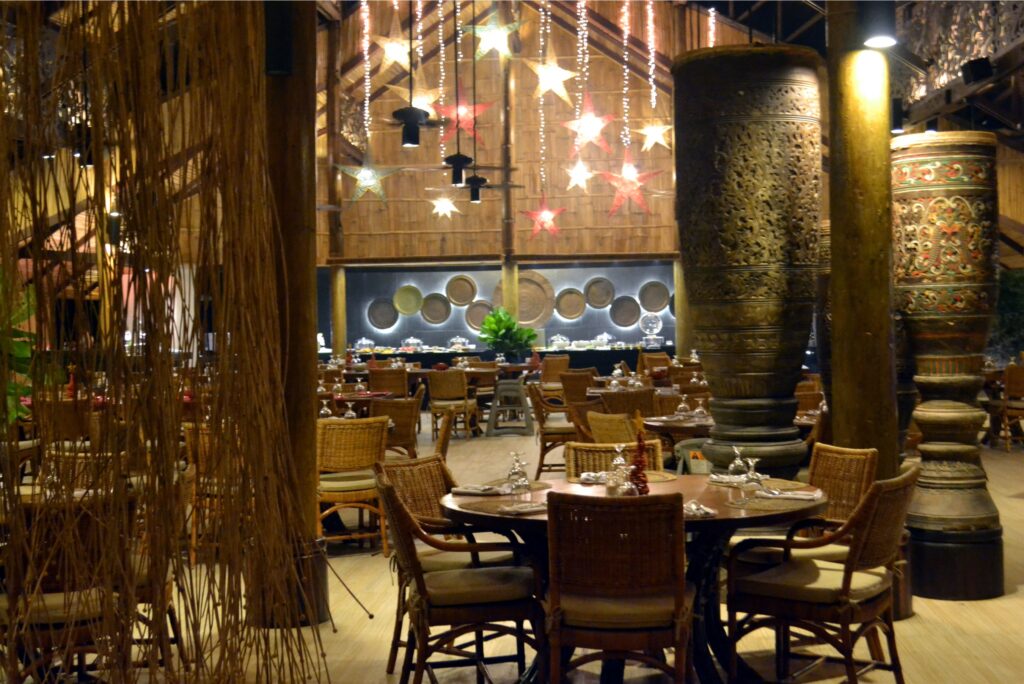
Maranao restaurant 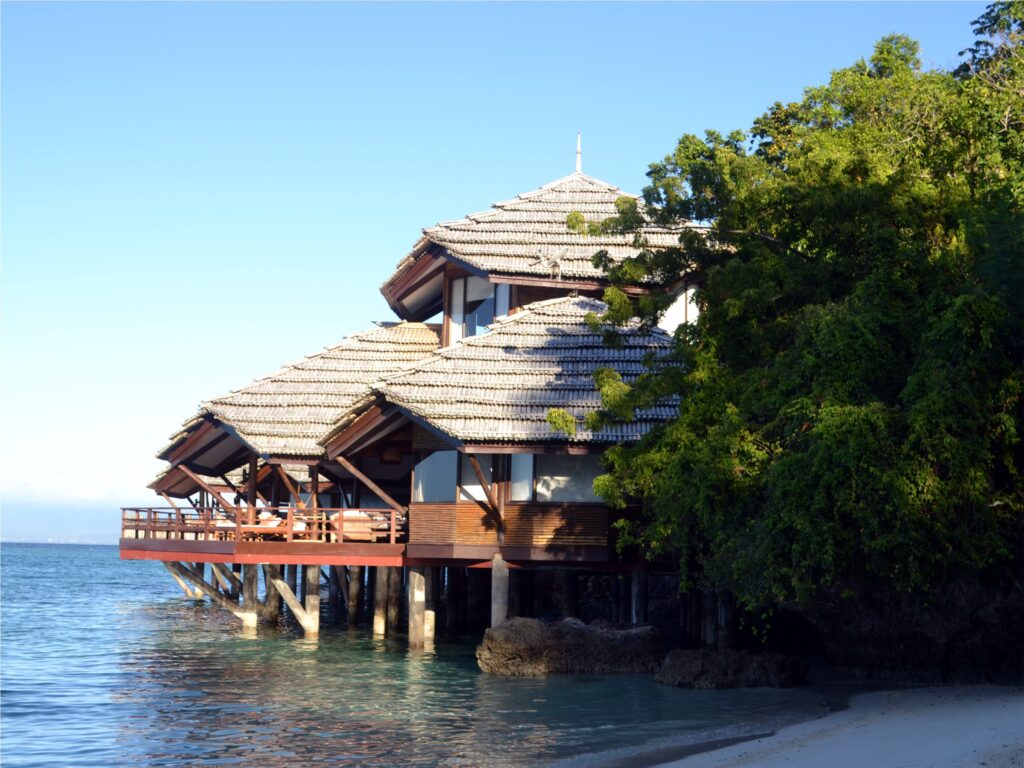
Malipano villa
At night, as you hit your pillow, all you will hear are the sound of waves which can be a soothing aid to slumber. In the morning, you feel refreshed as you wake up from a deep sleep. Going outside your room, you can take a deep breath, smell the fresh air, and experience the warmth of the vitamin D-laden sunshine. If good life can be summarized into a resort, then the Pearl Farm experience is it!
The secluded Malipanao Island, a few hundred meters off Samal Island, is where seven six exclusive villas of the resort are nestled. All waterfront bungalows were designed by world-renowned Architect Francisco “Bobby” Mañosa, inspired by the stilt houses of the Sulu Sea using strictly native materials such as bamboo, coconut, and yakal. Placed near the entrance of each villa is a jar of water and a coconut dipper which you may use to wash off the sand after a swim or walk on the beach.
A few walks from the villas is the Malipano Pavilion, where functions and parties are held. For one, it is a perfect venue for a wedding reception following the ceremony that may be solemnized in the exclusive chapel or on the beachfront.
Don’t worry about food. The newly-opened Maranao Restaurant features scrumptious Filipino dishes and enticing international cuisine with fresh seafood specialties prepared by its food connoisseur. Mouth-watering fresh fruits – bananas, papaya, green mandarin, mangosteen, mangoes, and rambutan – are served since these exotic fruits grow abundantly in the fertile landscapes of Davao and neighboring provinces as well as Samal Island itself. Some of the fruits are sometimes used to good effect in its long list of tropical cocktails.
Those who want to bring some pasalubong can go to Butik, a souvenir shop that offers a variety of local handicrafts, native outfits, and even the latest in trendy beachwear. It is located just a few meters away from its front desk office.
Many who have come to the Pearl Farm have kudos to say. “Wonderful place” was how Sports Unlimited host Marc Nelson described the resort. “Very peaceful,” he added. “We enjoyed it a lot,” said Brad Eivens, an American from Texas who spent several days at the resort with his family. “Food and accommodation were great.”
Indeed, Pearl Farm is now among the best resorts the Philippines can offer. But to Josu Mikel Villaverde, the resort general manager, it is “the only native luxury hotel.” The good-looking Spanish who is married to a Filipina explained: “The rest of hotels might be luxury or resort purely made of concrete. How many resorts made of wood using different construction methods inspired by so many different tribes can say they are the best?”
Pearl Farm Beach Resort is about a one-hour and thirty-minute flight from Manila. From the airport, guests have to travel about 50 minutes by car to Pearl Farm Davao Marina wharf. From the wharf, it is a mere 45-minute boat ride.

